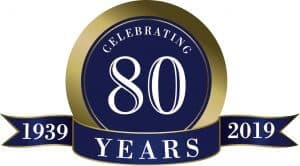By: Daniel Eissmann, CPA, Staff Accountant
Several changes have taken place in the past few years in regards to Unrelated Business Income (UBI) Net Operating Loss (NOL) Carrybacks. In addition, additional measures were instituted under the CARES Act, enacted in 2020. As a result, there is some confusion about what and how NOL carrybacks are applied, especially since the IRS has provided limited guidance on this matter. We will review the current regulations and how it impacts your nonprofit organization. In fact, there are some benefits that nonprofit organizations may wish to take advantage of.
What is UBI?
Despite what some may think, nonprofits can be taxed on some of their income. Unrelated Business Income, UBI for short, is one area a nonprofit organization is taxed.
Unrelated business income (UBI) is income from an activity of a trade or business that is regularly carried on and is unrelated to the organization’s exempt purpose. The most common form of UBI that we see with our clients is income from investments. This includes interests in qualifying partnerships, which includes LLCs organized as partnerships, and unrelated debt-financed properties. For example, if an organization decides to open a McDonald’s, income from this location will be considered UBI even if the income is used to support the organization’s exempt purpose since the source of the income is from an activity that does not fall within the organization’s exempt purpose.
Income from an activity is not considered UBI if it does not meet all defined requirements or if it meets one of the exceptions, such as volunteer labor; convenience of members, for example a school or office cafeteria for students, patients, officers, or employees; selling donated merchandise; bingo proceeds; and passive activities such as, rental of real property, interest and dividends, capital gains, and royalties.
Reporting UBI
Form 990-T is used to report UBI and it is taxed using the corporate tax structure. Much like corporations, nonprofit organizations can claim a laundry list of deductions and credits in order to reduce their taxable income and tax due, respectively. One such deduction is for Net Operating Losses, which is referred to as NOLs. NOLs occur when the organization’s allowable deductions exceeds its taxable income within a tax period. Additionally, NOLs can be used to offset losses in other periods. One of the most common causes of NOLs for nonprofit organizations is a loss from a partnership.
The rules regarding NOL treatment were changed in the Tax Cut and Jobs Act (TCJA) that was enacted in December 2017. In March 2020, the CARES Act implemented temporary rules changes.
The chart below summarizes NOL treatment prior to the TCJA, major changes due to the TCJA, and major changes due to the CARES Act:
| Prior to TCJA | TCJA | CARES Act | |
|---|---|---|---|
| Period Covered | Tax years beginning prior to January 1, 2018 | Tax years beginning after December 31, 2017 | Tax years beginning after December 31, 2017 and prior to January 1, 2021 |
| Corporate Tax Rate | 15% – 35% | 21% | 21% |
| ˄NOL Carryback | 2 years | No carryback | 5 years |
| NOL Carryforward | 20 years | Perpetuity | Perpetuity |
| NOL Limit | No limit | 80% of tax | No limit |
| UBIT Reporting | Aggregate | Separate | Separate* |
*CARES Act NOLs carried back to a tax year beginning prior to January 1, 2018 can be deducted against the aggregate.
˄ At one point, NOLs could be carried back, then they couldn’t because TCJA disallowed. Now that can be carried back, albeit temporarily.
The most apparent change is the change in the corporate tax rate. Prior to the TCJA, organizations were taxed anywhere between 15 and 35%; however, as a result of the TCJA, organizations are now taxed at a flat rate of 21%. This results in a decrease in the tax rate for organizations reporting taxable income of approximately $91,000 or greater.
Coinciding with the change in the corporate tax rate, the TCJA eliminated NOL carrybacks, meaning that organizations could no longer carryback NOLs originating in tax years beginning after December 31, 2017. As a result of COVID-19 and the subsequent passage of the CARES Act, Congress elected to temporarily re-allow carrybacks, referred to as CARES Act NOLs, for NOLs originating in tax years beginning after December 31, 2017 and prior to January 1, 2021.
CARES Act Impact on NOLs
It’s important to note that CARES Act NOLs have a carryback period of 5 years compared to the 2 year carryback allowed under the former tax law. In addition, due to short-year tax returns, the 5 year carryback may not actually carryback for 5 years. This is extremely advantageous to most organizations that anticipate or have experienced a loss as a result of COVID-19.
Nonprofit organizations have the opportunity take advantage of gains from prior tax years as far back as 2013 that were all taxed under the former tax structure and get a refund or credit. Organizations can use a refund to increase liquidity or a credit to assist in future tax payments. If an organization requests a refund or credit, it will first be applied to any current unpaid amounts of tax. Any remainder will be refunded or credited within a 90-day period.
The way UBIT is reported on the 990-T was changed as a result of the TCJA and the application of CARES Act NOL carrybacks will change depending on what tax year the NOL is being carried back to. Please consult your tax advisor for additional information regarding the application and reporting of CARES Act NOLs.
Basics of CARES Act NOL Carrybacks
Here are some carryback basics for CARES Act NOLs. CARES Act NOLs must first be carried back to the earliest year that it can be carried to. If the organization has a loss, did not have any taxable income, or there are NOLs that have not been exhausted, NOLs will be carried to each succeeding year until the NOLs are exhausted. If an NOL is not exhausted by the year the NOL originated, it is carried forward into perpetuity. NOLs originating in an earlier period are prioritized over NOLs originating in a later period. This means that NOLs originating prior to the TCJA must be used before NOLs originating after the TCJA are used. Your organization also has the option to waive carryback or to shorten the carryback period. The election has to be made to the IRS by the due date of the first taxable year ending after March 27, 2020 for taxable periods beginning in 2018 or 2019. Once this election is made, it is irrevocable.
How to File for Refund or Credit
To file for a refund or credit, your organization must file an amended Form 990-T and it must be paper filed. This may result in a delay on the IRS’ end as the IRS currently has millions of pieces of unopened mail.
Unlike non-exempt organizations, a quick file option is not available to nonprofit organizations; however, the quick file forms for non-exempt organizations, which are Form 1139 for corporations and Form 1045 for trusts, may be used as an attachment to support computation of the return claim.
In order get a refund, your organization must file the amended Form 990-T after the date of filing for the return the NOL originated in and within twelve months of that taxable year. For example, if an organization’s tax year ends on June 30, 2020, the organization will have until June 30, 2021 to file amended 990-Ts that take advantage of NOLs that originated in the tax year ended June 30, 2020. As the date had already passed for calendar year filers at the time of passage of the CARES Act, the IRS has granted an automatic six-month extension to file for organizations with a taxable year beginning during calendar year 2018 and ending prior to July 1, 2019. This extension applies only to NOL carrybacks.
Summary
- Nonprofit organizations are taxed on Unrelated Business Income using the corporate tax rate structure.
- The Tax Cuts and Jobs Act reduced corporate tax rates for tax years beginning after December 31, 2017.
- Under the CARES Act, organizations have a 5 year net operating loss carryback for tax years beginning in 2018, 2019 and 2020.
- Organizations have the opportunity to obtain refund or credit on net operating losses. Net operating losses need to be carried back to earliest carryback year, then carried forward into perpetuity.
- To obtain a refund, file amended Form 990-T by the due date.
- Be sure to contact your tax advisor to determine your eligibility.
For more information, you can visit our website at www.CoverRossiter.com or check out our Great Advice for Nonprofits Vlog on this topic below

Daniel Eissmann is a senior staff accountant in the audit department of Cover & Rossiter. He graduated from the University of Delaware with a Bachelor of Science degree in Accounting and Financial Planning. He also minored in Management Information Systems. He interned at Cover & Rossiter during his junior and senior years and joined the firm full-time in 2019. Contact Daniel at DEissmann@CoverRossiter.com or call 302-656-6632 x217.

